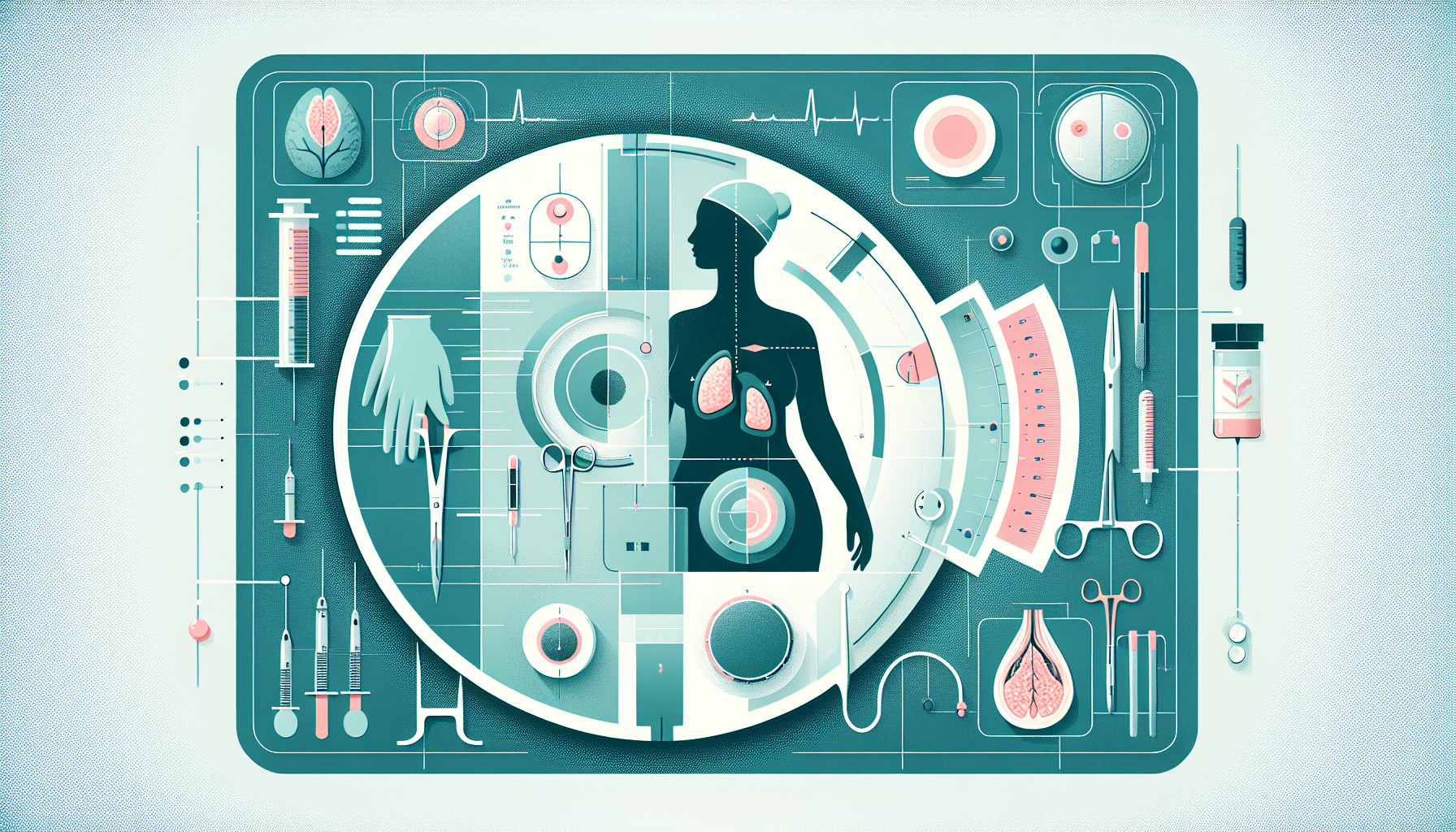Our Summary
This research paper discusses a new approach to reconstructing the breast after a mastectomy (surgery to remove the breast to treat or prevent cancer) using the patient’s own tissues. This method aims to improve the appearance of the breast and reduce complications after surgery. The researchers reviewed the medical records and pre- and post-surgery photos of patients who had undergone mastectomy and this type of reconstruction. They used this information to create a detailed, step-by-step plan for the surgical procedure. They concluded that effective communication within the surgical team and careful planning, including the use of physical examination, MRI, and other imaging techniques, are crucial for successful breast reconstruction and minimizing complications. They also emphasized the importance of carefully selecting the incision site and approach.
FAQs
- What is the new approach to breast reconstruction after mastectomy mentioned in the research paper?
- How does effective communication and careful planning contribute to successful breast reconstruction?
- Why is the selection of the incision site and approach important in the mentioned reconstruction method?
Doctor’s Tip
A helpful tip a doctor might tell a patient about mastectomy is to have open and honest communication with their healthcare team about their goals and concerns regarding breast reconstruction. It is important for patients to ask questions, voice their preferences, and actively participate in the decision-making process. This can help ensure that the reconstruction process aligns with their individual needs and desires, leading to a more satisfactory outcome. Additionally, patients should follow their doctor’s recommendations for post-operative care, including proper wound care, physical therapy, and any necessary lifestyle adjustments to promote healing and prevent complications.
Suitable For
Patients who are typically recommended for mastectomy include those with:
Early-stage breast cancer: Mastectomy may be recommended for patients with early-stage breast cancer that has not spread beyond the breast tissue.
High-risk individuals: Patients with a strong family history of breast cancer or genetic mutations such as BRCA1 or BRCA2 may opt for mastectomy as a preventive measure to reduce their risk of developing breast cancer.
Large tumors: Mastectomy may be recommended for patients with large tumors that are not suitable for breast-conserving surgery.
Recurrent breast cancer: Patients who have previously undergone breast-conserving surgery and have a recurrence of breast cancer may be recommended for mastectomy.
Inflammatory breast cancer: Mastectomy is often recommended for patients with inflammatory breast cancer, a rare and aggressive form of the disease.
Patients who prefer mastectomy: Some patients may choose mastectomy over breast-conserving surgery due to personal preference, concerns about recurrence, or other reasons.
Ultimately, the decision to undergo mastectomy is a personal one that should be made in consultation with a healthcare provider, considering factors such as the stage and type of breast cancer, the patient’s overall health and risk factors, and individual preferences.
Timeline
Before mastectomy:
- Patient is diagnosed with breast cancer or other condition requiring a mastectomy.
- Patient meets with their healthcare team to discuss treatment options, including the possibility of breast reconstruction.
- Patient undergoes various tests and imaging studies to determine the extent of the disease and plan for surgery.
- Patient meets with a plastic surgeon to discuss options for breast reconstruction and create a personalized treatment plan.
- Patient may undergo pre-operative procedures such as tissue expansion or nipple-sparing mastectomy, depending on the surgical plan.
After mastectomy:
- Patient undergoes mastectomy surgery to remove the affected breast tissue.
- If immediate breast reconstruction is planned, the plastic surgeon begins the reconstruction process during the same surgery.
- Patient may experience pain, swelling, and discomfort in the days and weeks following surgery.
- Patient attends follow-up appointments with their healthcare team to monitor healing and address any concerns.
- Patient may undergo additional procedures such as nipple reconstruction or fat grafting to further enhance the appearance of the reconstructed breast.
- Patient undergoes regular follow-up visits with their healthcare team to monitor for any signs of recurrence or complications.
Overall, the timeline of a patient’s experience before and after mastectomy involves a series of consultations, tests, surgeries, and follow-up appointments to ensure successful treatment and recovery. Effective communication and collaboration between the patient, healthcare team, and plastic surgeon are essential for achieving the best possible outcomes.
What to Ask Your Doctor
- What are the risks and benefits of mastectomy surgery for my specific situation?
- What are my options for breast reconstruction after mastectomy?
- How will breast reconstruction affect the appearance and feel of my breasts?
- What is the recovery process like after mastectomy and breast reconstruction?
- What are the potential complications or side effects of mastectomy and breast reconstruction?
- How will mastectomy and breast reconstruction impact my daily activities and lifestyle?
- How long will it take for me to fully recover from mastectomy and breast reconstruction?
- Are there any alternative treatments or procedures that I should consider?
- How experienced are you in performing mastectomy and breast reconstruction surgeries?
- Can you provide me with before and after photos of patients who have undergone mastectomy and breast reconstruction using this new approach?
Reference
Authors: Dickinson BP, Holmes D, Vu-Huynh N, Vu MB, Snyder L, MacDonald H, Guerra L, Coleman C, Fancher C, Hamoui N, Khan S, Kim S, Lopez J, Overstreet J, Ashjian PH. Journal: Breast J. 2020 Sep;26(9):1771-1780. doi: 10.1111/tbj.13874. Epub 2020 May 16. PMID: 32416032
